by Don Fitz
Conflicts persist in many African countries, including the Democratic Republic of the Congo (DRC), Somalia, South Sudan, Nigeria, the Central African Republic (CAR) and Libya. Valuable mineral resources often give rise to these struggles. Decades ago, wars for independence from colonial domination as well as wars over which local group would rise to power characterized much of the violence. Nowhere was this more evident than in Angola. The Angolan Wars of 1975-1988 forever changed sub-Saharan Africa and left the blood of Cubans imprinted on the conscience of the world.
Below is a recounting of that story, and the lessons it leaves for us today.
Angola: The Richest of All Colonies
Fed up with foreign wars, military officers in Portugal overthrew Prime Minister Marcello Caetano on April 25, 1974. As a result, many former colonies once controlled by Portugal now had the opportunity to define their own future.
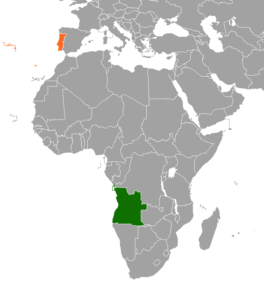
At that time, Angola had been the richest of Portuguese colonies, with major production in coffee, diamonds, iron ore and oil. Of the former colonies, it also had the largest white population, which numbered 320,000 of about 6.4 million. When 90% of its white population fled in 1974, Angola lost most of its skilled labor.
Three groups juggled for power. The Popular Movement for the Liberation of Angola (MPLA), headed by Agostinho Neto, was the only progressive alternative to the vestiges of Portugal’s colonial rule.
The National Front for the Liberation of Angola (NFLA), led by Holden Roberto, gained support from Joseph Mobutu, a right-wing military officer from Angola’s neighbor, the Republic of Congo (formerly the Belgian Congo.) Mobutu was a conspirator in the January 17, 1961 assassination of Patrice Lumumba, a Congolese nationalist leader who in 1960 had became the first prime minister of the newly independent Democratic Republic of the Congo; in 1964, Mobutu became President by a coup and renamed the country to Zaire. Lumumba was widely revered in Angola and throughout Africa, and his death was a shattering blow to African nationalists searching for a path out of western control.
Jonas Savimbi, who ran the National Union for the Total Independence of Angola (UNITA), worked hand-in-hand with South Africa’s apartheid regime. [See chart below)
Portugal ordered South Africa to remove its troops from Angola, which it did by October, 1974. The United States, then an ally of South Africa, felt unable to send troops because it had been recently defeated in the widely unpopular war in Viet Nam. Within a year, however, the new administration of Gerald Ford encouraged South Africa to send troops back into Angola.
Meanwhile, following a request for assistance from Neto, Fidel Castro sent representatives to meet with Neto along with the head of MPLA’s recently organized militia, the Popular Armed Forces for the Liberation of Angola (FAPLA). Not eager to intervene in a conflict Castro thought would not come to blows for 2 to 3 years, Cuba declined to give financial support.
__________________________________________________________________________________________
Contending Forces in Southern Africa
Allies of Cuba and the Soviet Union
MPLA Popular Movement for the Liberation of Angola, founded by Agostinho Neto and later led by José Eduardo dos Santos,
FAPLA People’s Armed Forces for the Liberation of Angola, military arm of MPLA.
ANC African National Congress, rebels opposing South African racists, sometimes trained in Angola.
Allies of South Africa and the US
UNITA National Union for the Total Independence of Angola, pro-South Africa Angolans headed by Jonas Savimbi
FNLA National Front for the Liberation of Angola, pro-South Africa Angolans headed by Holden Roberto.
____________________________________________________________________________________________
The South African invasion of Angola began on October 14, 1975 when many of its white troops pretended to be UNITA forces by darkening their faces with “Black Is Beautiful” camouflage cream. By November, Castro knew that without help the Angolan capital would fall to apartheid forces, so he approved military assistance. The small number of Cubans who arrived were critical in stopping the South African drive to Angola’s capital, Luanda.
Intense hostility between the rival pro-South African organizations UNITA and the FNLA resulted in the latter being crushed by early 1976, simplifying the conflict to battles between just two contending forces, the MPLA and UNITA, with their allies. Cuban troops reached Angola’s southern border with Namibia, completely pushing out the forces of apartheid.
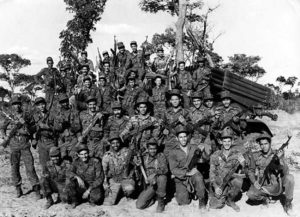
Multiple factors propelled Cuba’s involvement in Angola. As I explain in my book, Cuban Health Care, the 1959 revolution against the repressive dictatorship of Fulgencio Batista was so intensely opposed by the US that it became clear that the best defense of Cuba would be to go on an offense in another part of the world. A huge number of Cubans are of African descent, and the island’s revolutionaries saw anti-racism as core to their politics. Fidel would have no problem rallying these Cubans against the threat of an American intervention while frequently referring to South Africa’s anti-apartheid struggle as “the most beautiful cause.” Besides, a campaign in Africa would be less likely to provoke a direct confrontation, largely because most Americans did not see Africa as part of their backyard.
The Second Phase of War
As the fighting lessened, the number of Cuban soldiers in Angola dropped from 36,000 in April 1976 to under 24,000 within a year. However, when France and Belgium sent troops to neighboring Zaire, Cuba halted its troop withdrawal.
Throughout the Angolan conflict, South Africa and the US ignored international law and acted as if it were perfectly natural for South Africa to dominate Namibia, Angola’s neighbor to the south. South Africa’s post-World War I mandate to oversee Namibia had ended in 1971, but it was reluctant to let go of an area rich in diamonds, uranium and copper. In his book, Visions of Freedom, Piero Gleijeses documents how South Africa claimed that the refugee camp at Cassinga, in south-central Angola, was actually a military base for Namibian rebels. After South African planes massacred 600 Namibian refuges at Cassinga in May 1975, US President Jimmy Carter brushed this horrific event aside and quipped that “we hope it’s all over.”
Memories of that massacre stayed in the mind of a 12 year old girl, Sophia Ndeitungo. During a November 13, 2007 interview she told Gleijeses: “The first Cubans I ever saw were the soldiers who came to Cassinga.” Most Cubans were white, so she “…thought they were South Africans. Later, we understood that not all whites are bad.” Sophia was relocated to Cuba’s Isle of Youth to study. She graduated from Havana’s medical school, married another Cassingan refugee, returned to Namibia, and became head of its armed forces medical services in 2007. For thousands of Black Africans, Cubans were the only white people who showed them any kindness.
Exuberant over the 1980 US election of Ronald Reagan, South Africa stepped up its raids in Angola, Mozambique, Zimbabwe, Zambia, Lesotho, Swaziland, and Botswana in order to suppress opposition to its intended domination of southern Africa. In August 1981 South Africa poured 4000 to 5000 troops into southern Angola with tanks and air support. It expanded its tactics to include poisoning wells, killing livestock and destroying food distribution and communications. It was in this context that Cuba began sending 9000 troops back to Angola during August 1983.
Savimbi: Ally of the US and South Africa
As early as 1974, UNITA’s leader Savimbi had established contacts with the Portuguese dictatorship and promised South Africa that he would help them build an anti-communist bloc. Savimbi spoke fluent English, oozed self-confidence, cleverly manipulated his audience, knew just what Americans wanted to hear, and, according to Gleijeses, was “without scruple.” In other words, his combination of qualities was a perfect fit for a CIA front man.
Savimbi consolidated his local power by executing village opponents to his harsh rule as “sorcerers.” He had total control and did not tolerate dissent. As Gleijeses describes, by 1980 Savimbi had “the wives and children of the dissenters burned alive in public displays to teach the others” not to challenge him.
Gleijeses notes that Special Forces Colonel Jan Breytenbach saw Savimbi as a “manipulator extraordinaire … As a political leader, he was very good. I would compare him to Hitler.” This comparison to Hitler was not a slighting of Savimbi – it was a compliment, as multiple top South African politicians had been members of pro-Nazi groups.
Among those who overlooked Savimbi’s campaigns of mass destruction was President Jimmy Carter and his administration (1977-1981). Carter took time out of his schedule of human rights advocacy to arrange the flow of secret US dollars and weapons to UNITA. Steve Weissman was a staff member of the House Foreign Affairs Committee’s Subcommittee on Africa. Gleijeses cites Weissman’s 1985 summation of attitudes that spanned both parties: “We wanted to hurt Cuba, and we wanted to help people who wanted to hurt Cuba. When Savimbi said that he was ‘fighting for freedom against Cuba’ – this was his trump card. It was impossible to counter it. Savimbi had one redeeming quality: he killed Cubans.”
South African attitudes showed utter contempt for Blacks. Eeben Barlow, in Executive Outcomes: Against All Odds (2007), writes that deaths of whites were followed by announcements from the army and newspaper obituaries in the press; but deaths of Black soldiers were not broadcast either by their military superiors or by the press at home.
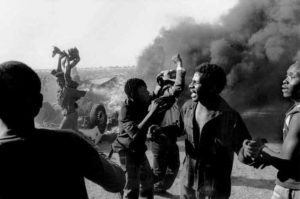
Conflicts between Allies
Considerable discord arose from the marriage of necessity between Cuba and its ally, the Soviet Union. As Gleijeses documents, Cuba’s strategy had been for it to confront the better armed and trained South African forces and for Angola’s leftist FAPLA to counter internal enemies by guerrilla warfare. The Soviets, on the other hand, believed that FAPLA should develop a conventional army with tanks and heavy weapons to fight South Africa.
But Angolan troops had virtually no formal education. Officers might have reached the second, third or fourth grade, but the army’s rank and file typically had never been to school and were unable to master sophisticated weapons provided by the Soviets.
While Cuba advocated FAPLA’s concentrating on UNITA, it simultaneously cautioned that the Angolan military should have Cuban backup whenever venturing into territory largely surrounded by UNITA and South African troops. President Agostinho Neto, who had been Angola’s president since 1974, died in September 1979, and his successor, José Eduardo dos Santos, was often lured by Soviet visions of having a conventional army strong enough to overcome both opposition forces.
Throughout the conflict, the Soviets acted as if the primary weapons of war were logistical plans, tanks and weapons, while for Cuba the maps of war were drawn from the hearts and minds of those who used these weapons. Cuba understood that the Angolan front was part of a broad campaign against racist domination across southern Africa.
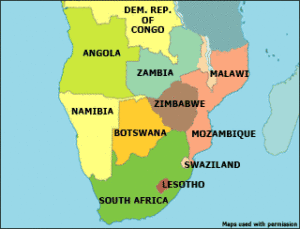
Hopes for a New World Begin to Glimmer
In March 1976, when Cuban forces pushed South Africa’s military out of Namibia, there was a tidal wave against white racist rule as Blacks became joyfully aware that apartheid forces were vulnerable. In September 1977, Steve Biko, South Africa’s anti-apartheid revolutionary, died in police custody, and within a month the government had banned 18 organizations and the most important Black newspaper. In September 1984, a new South African constitution bestowed political participation upon “Coloreds” and Indians while denying the same rights to Blacks. Black townships in the industrial centers of the country exploded. Massive demonstrations, strikes, school walkouts and boycotts of white owned stores spread like wildfire. Soon funerals for victims of state repression were added to the events.
The Soweto celebration of Bishop Desmond Tutu’s receiving the 1984 Noble Peace Prize drew a huge rally. Open opposition to apartheid mushroomed hand-in-hand with intensification of the war in Angola. By 1987 the South African demonstrations were so large that thousands of white solders were assisting police within its borders.
Gleijeses points out that the Soviets were generally aloof from those they came to protect. Africans themselves noticed how quickly Cuban soldiers, doctors, and others stationed near them melded into their society. One recruit remembered that “the Cubans ate what we ate, slept in tents like us, lived as we did.” During an interview with me, physician Oscar Mena described his work in Angola as a “beautiful experience.” Soviets in Angola seemed to think of it more as a job. Battlefields reflected the cultural chasm – Soviet advisers stood on the sidelines of fighting while Cubans always joined in combat.
Dancing Barefoot on a Razor’s Edge
In 1985, the Soviets persuaded the MPLA to attack UNITA’s stronghold in Mavinga in southeastern Angola, despite dire warnings from Havana that the MPLA would have to go through an area controlled by UNITA and create a supply line that it could not possibly defend. The MPLA met with a disastrous defeat. The same tragedy was repeated in 1987.
Afterwards, South Africa’s General Jan Geldenhuys boasted of its victory to the press, which sparked an intense global repudiation since that country had claimed non-involvement in Angola. Was the time now ripe for Cuba to launch an all-out attack on South Africa’s forces? This decision had Fidel dancing on a razor’s edge.
Gleijeses, in reviewing Castro’s options, concludes that the most delicate balancing act was with the Soviet Union. Without its financial aid, Cuba could not carry out the war. Without its donation of military supplies, Angola’s FAPLA would be unable to fight. But repeated bungling of strategic decisions by the Soviets threatened every aspect of the war.
No less sensitive was Angola, which seemed mired in corruption. Yet the MPLA, which had governed Angola since 1974, was vastly superior to whatever Savimbi would usher in. A victory in Angola would strike a mortal blow into the heart of apartheid; but Cuba could not go forward without approval from authorities in the Angolan capital of Luanda .
Cuba had saved its most powerful weapons for self-protection in the event of a US invasion. As Cubans drew weary of a decade and a half of sacrifice, Fidel and his brother Raúl, who was the minister of defense, knew that being too cautious might mean missing an opportunity that would never repeat itself. However, moving too quickly could cause a defeat that would demoralize and exhaust the Cuban troops, doctors, and people at home.
They also knew that thousands of white soldiers became unavailable for service in Angola because they were needed in South Africa to suppress dissent. Reagan’s embroilment in the Iran-Contra scandal left the US unable to go on an attack.
Cuba’s leaders agreed that the hour had arrived to send vastly more troops and arms to Angola, including their best planes, their best pilots and their most sophisticated weapons. In March 1988, FAPLA and Cuba defended the town of Cuito Cuanavale (north and west of nearby Mavinga) as it was attacked by South African and UNITA troops. Enough Cuban planes and pilots had arrived for them to score a victory in the air. At the same time Angolan troops drove back the ground attack. South African troops were demoralized as their losses signaled the beginning of the end. Nelson Mandela observed that this key battle “destroyed the myth of the invincibility of the white oppressor.”
Despite the clear defeat of apartheid forces, US diplomats continued to tell their Soviet counterparts that South Africa would not leave Angola until all Cuban troops were gone. Fidel told the Soviet negotiator to “ask the Americans why has the army of the superior race been unable to take Cuito, which is defended by Blacks and Mulattoes from Angola and the Caribbean?”
Cuban negotiator Jorge Risquet politely told the South Africans that they “must understand that they will not win at this table what they have failed to win on the battlefield.” Knowing that a full invasion of Angola would be rebuffed internationally, would result in thousands of casualties, and potentially would leave the country unable to defend itself from internal black rebellion, South Africa’s politicians gave the nod to their military commanders to leave. South African troops were withdrawn from Angola by August 30, 1988.
In Angolan elections, dos Santos of the MPLA defeated Savimbi (49.8% to 40.1%). In April 1990 South African president Frederick de Klerk legalized the African National Congress and the South African Communist Party as he freed Nelson Mandela, who was elected to head the country in April 1994.
Many of the parallels between the United States in Viet Nam and Cuba in Angola are striking, and both foreign interventions had a profound effect on public consciousness. Yet Cuba was defending an actual country from invasion. while the division of Viet Nam into “North” and “South” was manufactured by French and Americans. It was no coincidence that Cuba treated Angola as a sovereign state (despite many differences) while US politicians had as much respect for Vietnamese as a puppeteer has for his many toys.
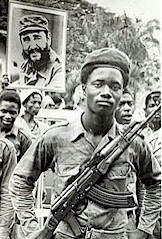
No one appreciated the political reality more than South Africans who opened Freedom Park in Pretoria in 2007. Its Wall of Names includes 2103 Cubans who lost their lives in the Angolan war. Cuba is the only foreign country represented on the Wall.
This article is based on the following: information documented in Piero Gleijeses’ Visions of Freedom: Havana, Washington, Pretoria, and the Struggle for Southern Africa, 1976-1991 (2013); interviews by Hedelberto López Blanch which appear in his book Historias Secretas de Médicos Cubanos (2005); interviews by the author reported in his book Cuban Health Care: The Ongoing Revolution (2020); and interviews by Candace Wolf in her unpublished paper, The Zen of Healing (2013). A version of this article appeared in openDemocracy.
Don Fitz ([email protected]) is on the Editorial Board of Green Social Thought. He was the 2016 candidate of the Missouri Green Party for Governor. His book on Cuban Health Care: The Ongoing Revolution has been available since June 2020 and has citations for all quotations in this article.
